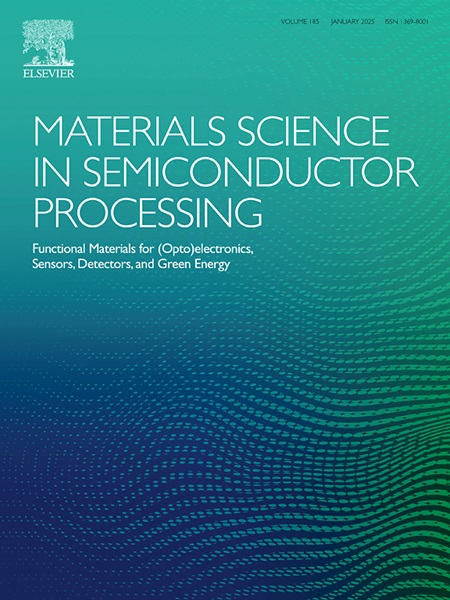First-principles prediction of ferromagnetism and Curie temperature for transition metals doped single walled (6,0) SiC nanotubes: Materials for application in spintronics
IF 4.2
3区 工程技术
Q2 ENGINEERING, ELECTRICAL & ELECTRONIC
引用次数: 0
Abstract
The electronic and magnetic characteristics of TM-doped single-walled SiC nanotubes were studied using Density Functional Theory and the local spin density approximation. From ab initio simulations, bandgap for undoped SiC nanotube and SiC:V systems which are obtained 0.98 eV, and 0.6 (spin-up); 1.4 eV (spin-down), respectively. After doped with 3d transition metals, the SiC nanotube systems induce a magnetic response and the total magnetizations of the quantum confined single walled SiC:Co and SiC:V systems are ∼1.9 μB and 1.0 μB, respectively. The results of total energy calculations predicted that the ferromagnetic and antiferromagnetic phases are stable for VxSi1-xC and CoxSi1-xC. The obtained values of formation energies show the stability of VxSi1-xC and CoxSi1-xC systems. Our results predicted that VxSi1-xC have semi-metallic behavior with Curie temperature is nearly above to 300 K and it suitable for spin-based applications in future material informatics research field. CoxSi1-xC shows metallic behavior, and it is the better choice for optoelectronics devices with a Curie temperature less than room temperature.
过渡金属掺杂单壁(6,0)SiC纳米管的铁磁性和居里温度第一性原理预测:自旋电子学应用材料
利用密度泛函理论和局域自旋密度近似研究了掺杂tm的单壁SiC纳米管的电子和磁性特性。通过从头算模拟,未掺杂SiC纳米管和SiC:V体系的带隙分别为0.98 eV和0.6 eV(自旋向上);1.4 eV(自旋下)。掺杂三维过渡金属后,SiC纳米管体系产生磁响应,量子约束单壁SiC:Co和SiC:V体系的总磁化强度分别为~ 1.9 μB和1.0 μB。总能量计算结果预测VxSi1-xC和CoxSi1-xC的铁磁相和反铁磁相是稳定的。得到的形成能值显示了VxSi1-xC和CoxSi1-xC体系的稳定性。研究结果表明,VxSi1-xC在居里温度接近300 K时具有半金属性质,适合在未来材料信息学研究领域中基于自旋的应用。CoxSi1-xC表现出金属性质,是居里温度低于室温的光电子器件的较好选择。
本文章由计算机程序翻译,如有差异,请以英文原文为准。
求助全文
约1分钟内获得全文
求助全文
来源期刊

Materials Science in Semiconductor Processing
工程技术-材料科学:综合
CiteScore
8.00
自引率
4.90%
发文量
780
审稿时长
42 days
期刊介绍:
Materials Science in Semiconductor Processing provides a unique forum for the discussion of novel processing, applications and theoretical studies of functional materials and devices for (opto)electronics, sensors, detectors, biotechnology and green energy.
Each issue will aim to provide a snapshot of current insights, new achievements, breakthroughs and future trends in such diverse fields as microelectronics, energy conversion and storage, communications, biotechnology, (photo)catalysis, nano- and thin-film technology, hybrid and composite materials, chemical processing, vapor-phase deposition, device fabrication, and modelling, which are the backbone of advanced semiconductor processing and applications.
Coverage will include: advanced lithography for submicron devices; etching and related topics; ion implantation; damage evolution and related issues; plasma and thermal CVD; rapid thermal processing; advanced metallization and interconnect schemes; thin dielectric layers, oxidation; sol-gel processing; chemical bath and (electro)chemical deposition; compound semiconductor processing; new non-oxide materials and their applications; (macro)molecular and hybrid materials; molecular dynamics, ab-initio methods, Monte Carlo, etc.; new materials and processes for discrete and integrated circuits; magnetic materials and spintronics; heterostructures and quantum devices; engineering of the electrical and optical properties of semiconductors; crystal growth mechanisms; reliability, defect density, intrinsic impurities and defects.
 求助内容:
求助内容: 应助结果提醒方式:
应助结果提醒方式:


